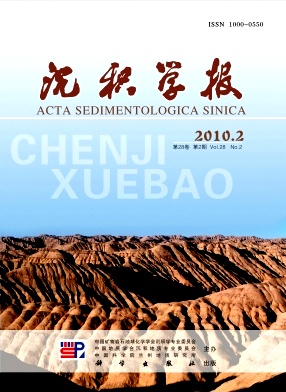Paleoenviromental and Paleoclimatic Changes in Lake Xingkai Inferred from Stable Carbon and Nitrogen Isotopes of Bulk Organic Matter Since 28kaBP
- Received Date: 1900-01-01
- Rev Recd Date: 1900-01-01
- Publish Date: 2010-04-10
-
Key words:
- organic carbon and nitrogen isotope
Abstract: Xingkai Lake, a transboundary lake by China and Russia, is the largest freshwater lake in Northeast Asia. A 269 m long continuous sediment core, approximately 28 kaold at the bottom, from Lake Xingkai, has been analyzed first in China for the stable isotopes of carbon, nitrogen, TOC and C/N ratios, in order to study the paleoclimatic and paleoenviromental changes in the area. The result showed that all δ13Corg values are well within the range of 24.56‰~27.67‰ derived from C3 vegetation, and the composition of δ13Corg in C3 plants increases with deceasing annual precipitation and temperature. So, sedimentary organic carbon in colddry periods is more enriched in 13C than that in warmwet periods. Low TOC, which are typical for lower temperatures, coincided with lower C/N ratios, reflecting that in cold period the sedimentary organic matters mainly derived from aquatic organic matters which have higher δ15N values than terraneous organic matters. These results enable us to reconstruct the evolution sequence of paleoclimate in Xingkai Lake region, 28 480~26 160cal.aBP, the climate was cold and dry;
26 160~22 880cal.aBP, the climate became warm and wet; 22 880~18 185cal.aBP correspond to the Last Glacial Maximum(LGM); 18 185~12 650cal.aBP, it was an frequent oscillation period corresponding to Blling/Older Dryas/Allerd warm period; Younger Dryas cold event occured at about 90~78 cm depth in the core; 11 500~4 570 cal.aBP, climate became wet and warm gradually, in which it was temperaturedry in early stage and temperaturewet in late stage, but 8 000~5 000 cal.aBP was Holocene Megathemal period(Holocene thermal optimum)in the area; During 4 570~1 470 cal.aBP, it was a colddry climate, and since 1 470 cal.aBP, climate became warmwet again.
| Citation: | WU Jian. Paleoenviromental and Paleoclimatic Changes in Lake Xingkai Inferred from Stable Carbon and Nitrogen Isotopes of Bulk Organic Matter Since 28kaBP[J]. Acta Sedimentologica Sinica, 2010, 28(2): 365-372. |






 DownLoad:
DownLoad: